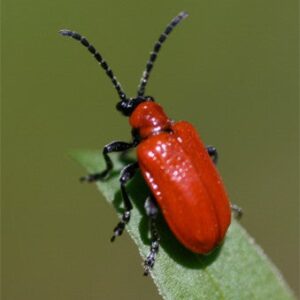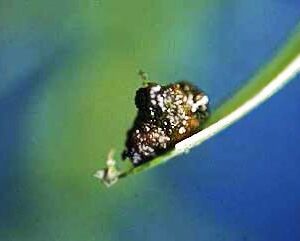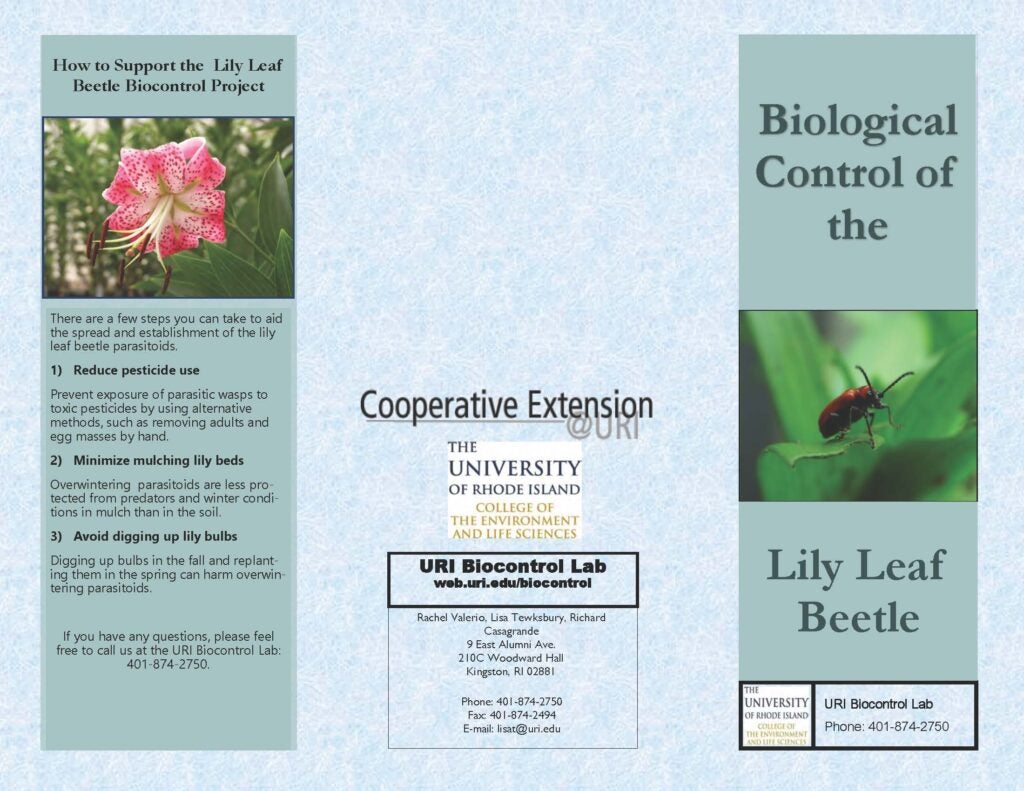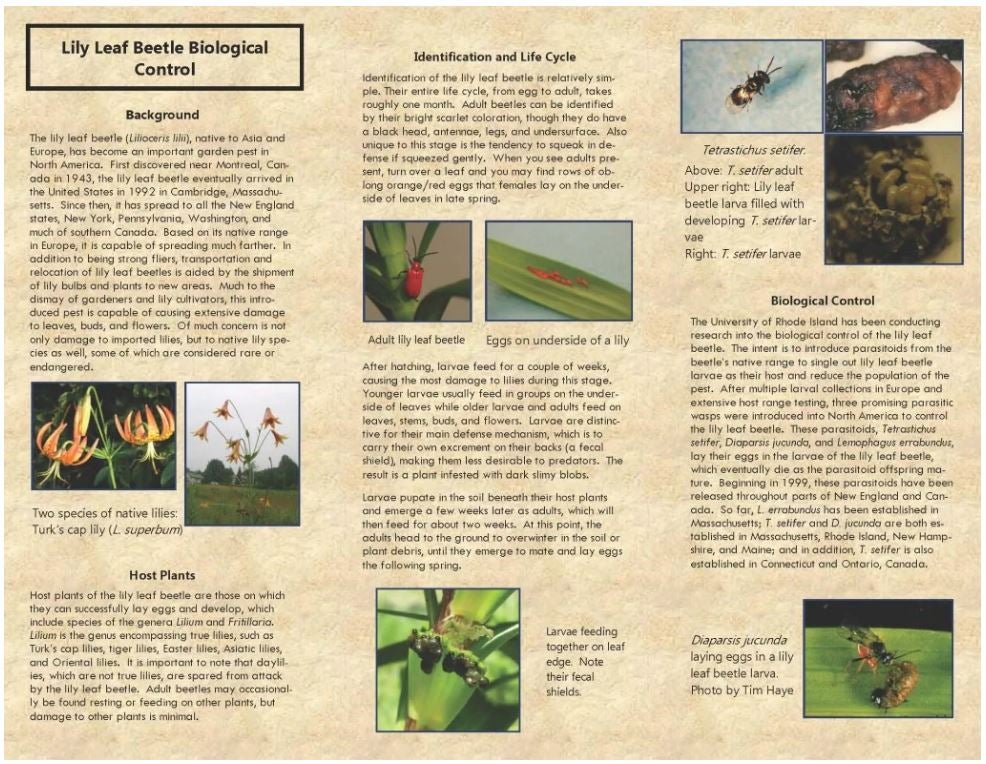New Publication: Successful Biological Control of the Lily Leaf Beetle!!
URI researchers Lisa Tewksbury and Dick Casagrande are co-authors, along with Naomi Cappuccino of Carleton University, of a new book chapter on the Successful biological control of the Lily leaf beetle (Lilioceris lilii). This chapter, published in the 2022 USFS book, “Contributions of Classical Biological Control to U.S. Food Security, Forestry, and Biodiversity“, outlines the history of biocontrol efforts against LLB with three parasitoid species, successes in establishment of the parasitoids, and decline of reported LLB damage in parts of New England.
Lily growers in New England are all too familiar with the lily leaf beetle (LLB, Lilioceris lilii). Native to Europe, these beetles were first identified in the US in Cambridge, Massachusetts, in 1992. The wings of these insects are bright red and shiny while their undersides are black (Fig. 1). The larvae, which range in color from yellow to orange-brown and have black heads (Fig. 2), are mainly responsible for the defoliation of lilies. If no intervention occurs, LLB can defoliate an entire plant.
The University of Rhode Island Biocontrol Lab is researching natural predator of the lily leaf beetle. Three species of small parasitic wasps (Tetrastichus setifer, Lemophagus errabundus, and Diaparsis jucunda) were released in ME, NH, VT, MA, RI, CT, and NY as biocontrol agents of the lily leaf beetle. They are now established and are dispersing throughout New England and New York. To learn more about these parasitoids and their dispersal, see Cornell University`s “Parasitizing Wasps Offer Hope Against Devastating Lily Beetle. “
If you`re not sure if you have the lily leaf beetle, use our Photo Identification Guide. To see what students have been researching in our lab over the years, check out our LLB posters page. For more information on where lily leaf beetle can be found, go to the Lily Leaf Beetle Tracker or refer to our brochure and our Lily Leaf Beetle Parasitoid Establishment publication below.


Lily Leaf Beetle Brochure


Related Documents
- Pest Watch Washington State University Extension Fact Sheet 2014
- Establishment of Parasitoids of the Lily Leaf Beetle in North America
- Contributions of Classical Biological Control to U.S. Food Security, Forestry, and Biodiversity (Chapter 15: Successful Biological Control of the Lily Leaf Beetle, Lilioceris lilii)
Related Links
- Basic Information University of Connecticut Home & Garden Education Center 2016
- Lily Leaf Beetle Tracker
- How to Control LLB Video (YouTube)
- iNaturalist Observation and Distribution
